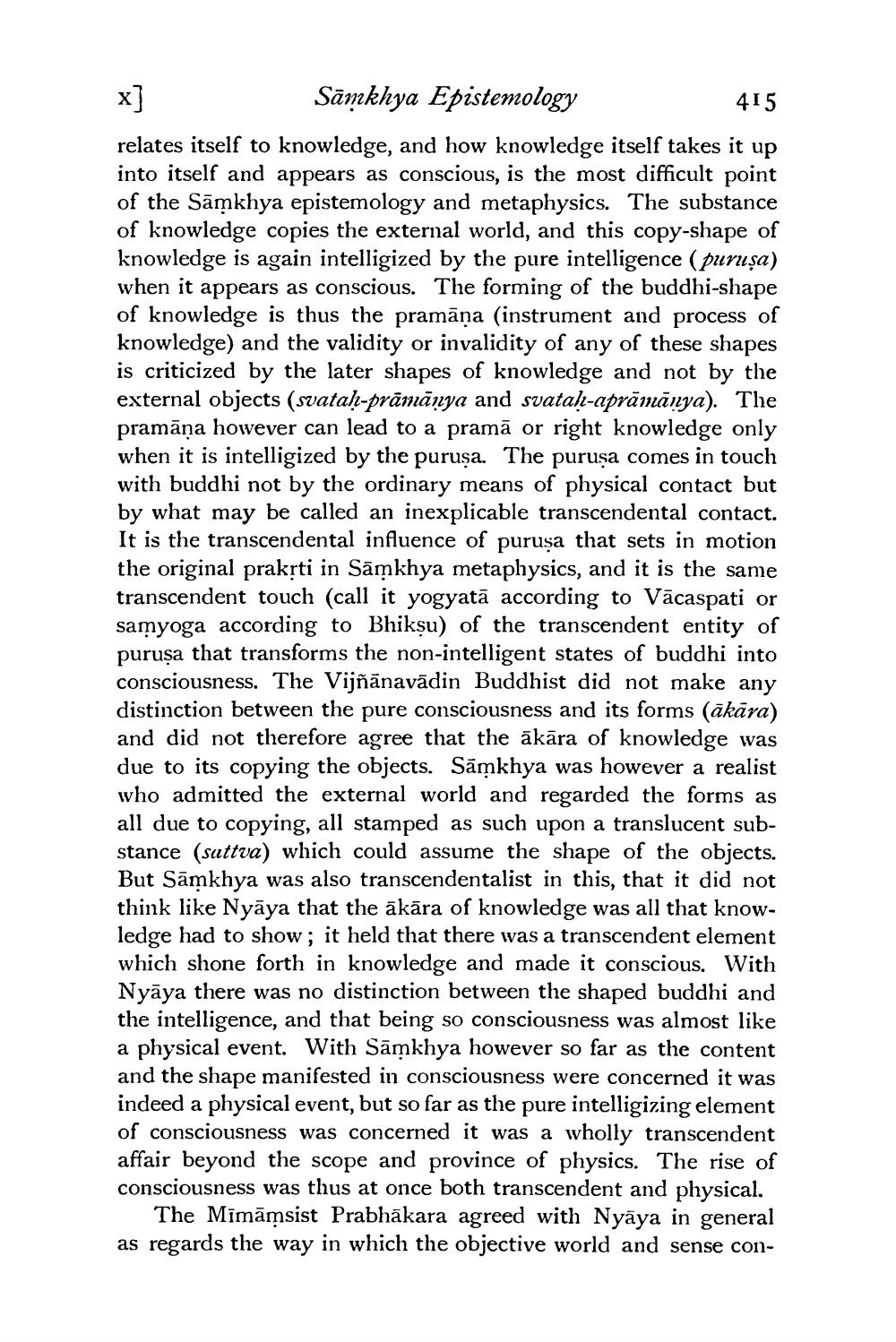________________
Sāmkhya Epistemology
415 relates itself to knowledge, and how knowledge itself takes it up into itself and appears as conscious, is the most difficult point of the Sāmkhya epistemology and metaphysics. The substance of knowledge copies the external world, and this copy-shape of knowledge is again intelligized by the pure intelligence (puruṣa) when it appears as conscious. The forming of the buddhi-shape of knowledge is thus the pramāņa (instrument and process of knowledge) and the validity or invalidity of any of these shapes is criticized by the later shapes of knowledge and not by the external objects (svatah-prāmānya and svataḥ-aprāmānya). The pramāņa however can lead to a pramā or right knowledge only when it is intelligized by the puruşa. The puruşa comes in touch with buddhi not by the ordinary means of physical contact but by what may be called an inexplicable transcendental contact. It is the transcendental influence of purusa that sets in motion the original praksti in Sāmkhya metaphysics, and it is the same transcendent touch (call it yogyatā according to Vācaspati or samyoga according to Bhiksu) of the transcendent entity of puruşa that transforms the non-intelligent states of buddhi into consciousness. The Vijñānavādin Buddhist did not make any distinction between the pure consciousness and its forms (ākāra) and did not therefore agree that the ākāra of knowledge was due to its copying the objects. Sāmkhya was however a realist who admitted the external world and regarded the forms as all due to copying, all stamped as such upon a translucent substance (sattva) which could assume the shape of the objects. But Sāmkhya was also transcendentalist in this, that it did not think like Nyāya that the ākāra of knowledge was all that knowledge had to show; it held that there was a transcendent element which shone forth in knowledge and made it conscious. With Nyāya there was no distinction between the shaped buddhi and the intelligence, and that being so consciousness was almost like a physical event. With Sāmkhya however so far as the content and the shape manifested in consciousness were concerned it was indeed a physical event, but so far as the pure intelligizing element of consciousness was concerned it was a wholly transcendent affair beyond the scope and province of physics. The rise of consciousness was thus at once both transcendent and physical.
The Mīmāmsist Prabhākara agreed with Nyāya in general as regards the way in which the objective world and sense con




